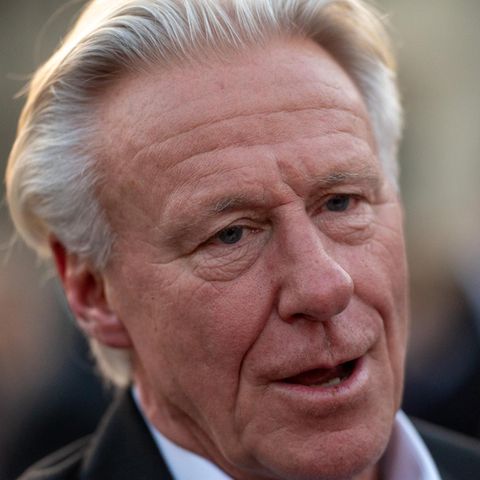However, the Palacio de Hacienda he already burned several of the tools he has on hand to try to prevent the price rise from skyrocketing, with the STEP in sightthe remaining cartridges are few.
Inflation: used and remaining anchors
The ruling party used several anchors to avoid runaway inflation. Let’s remember:
- The BCRA stepped on the official exchange rate.
- Backwardness regulated prices to pull down the CPI.
- used rreserves to intervene in the dollar.
- exercises direct control about prices.
- Seeks to handle the interest rate aiming that it more or less accompanies the expected inflation.
- regulation of monetary base.
The government works directly on prices, the interest rate and also regulates or tries to control the amount of money in circulation through the absorption of liquidity carried out through LELIQs, compensating the expansions it makes elsewhere, and is maintaining it at a rate that, in recent times, is more or less equivalent to 43-44% in 12 months”, explains Camilo Tiscorniadirector of C&T Asesores Económicos to this medium.
Dollar: the government’s objective to appease inflation?
“What does macroeconomic theory tell you? asks Tiscornia, and answers himself: “You can control, through the Central Bank (BCRA), all these nominal anchors and the others are going to have a coherent evolution with the one that is trying to be managed”.
So, by defining Which of these tools would be the most important? for the Government, Tiscornia believes that It is the official exchange rate”. And this, according to the economist, is due to the fact that, in the long term, it has been observed that financial exchange rates hit significant jumps; price agreements eventually they do not work; the amount of money controlled by the Central Bank, that is, and the monetary base it does not “really represent the total measure of money in the economy.” That reveals that “some issues get out of the hands of the government and that the official exchange rate is the least escaped”.
Thus, Tiscornia maintains that maintaining the exchange rate in arrears is “the last anchor that the Government will be able to firmly control”. However, as the C&T economist rightly points out, by not being able to stop the dollar “due to lack of foreign currency”, the Government moves it at the rate it can (7%) and “inflation goes accordingly”. Thus, the analyst considers that this strategy “It is not good” and falls “very short”.
Food: another look suggests that these are the anchor
For his part, for Claudio Caprarulodirector of Analytica, the problem is that this year the Government “has no anchors” to lower the inflation and maintains that the only tool that he began to use and that is consistent with what happened with the price of the meat“is associated with containing the currency gapthrough parallel dollars”.
Caprarulo comments in statements that, from Analytica, they observe that the parallel dollars “they maintain a gap of around 100% with respect to the wholesaler” and, although it is still very high, there was no “significant impact on prices in recent months”, as observed in the past.
INFLATION AND DOLLAR.jpg
However, the analyst warns that the Government “has not yet resolved the exchange rate problem, which would be essential to contain expectations of a devaluation and avoid the acceleration of inflation”.
And he warns, in this sense, that the second half of the year will be more complex due, among other factors, to “the lack of seasonal increase in soybean exports”which usually occurs during the liquidation of the harvest.
For this reason, for Caprarulo “the price of meat and the stability in the exchange rate gap” are the anchors that have contributed to the slight deceleration in inflation. “However, due to the drought and the macroeconomic imbalances accumulated over the years, the best scenario for the government would be to stabilize inflation at around 7% monthly”.
Fiscal goal: “The only anchor that was not used”
Lucio Garay MendezEco Go economist, maintains that the Government already used many anchors in the past and mentions, for example, that “in 2021, prior to the electionsstepped on the official exchange rate, when that variable had more relevance in the economy than now, and the Central Bank moved the dollar around 1% for several months”.
And he adds that also, in the same period, the Government delayed the regulated prices to pull the CPI down. “Rates and fuels are the clear example of that,” he mentions.
Also, they were used reserves to intervene in the parallel dollar and keep it constant for a long time, so “the only anchor they have not used so far is the fiscal/monetary one”.
Garay Méndez argues that, although the fiscal goal could have converged at 1.9% of GDP agreed with the International Monetary Fund (IMF), the drought “seriously” affected export rights, for what he proposes, an “adjustment of spending even greater than what is already being carried out” is required”.
For Garay Méndez, a level of “distortions that are not enough with just an anchor”, but that there must be a “broad policy that corrects relative prices, rebuild reserves and stop injecting more pesos all the time to the economy”.
With the aforementioned by the analysts consulted, the availability of dollars is emerging as a critical challengereserves continue to decline and it is not clear how much the IMF will contributeSo the risks are numerous.
The government is likely try to compensate for the lack of dollars by various checks and, thus, avoid a disconnection in the exchange rate, especially in the official one. In the same line, it will look for prevent escaping financial exchange rateswhich, for the experts, is a “most difficult task”.
“Maybe you can benefit from positive expectations generated by the electionsbut the risks remain considerably high”, he concluded Tiscornia.
Source: Ambito




